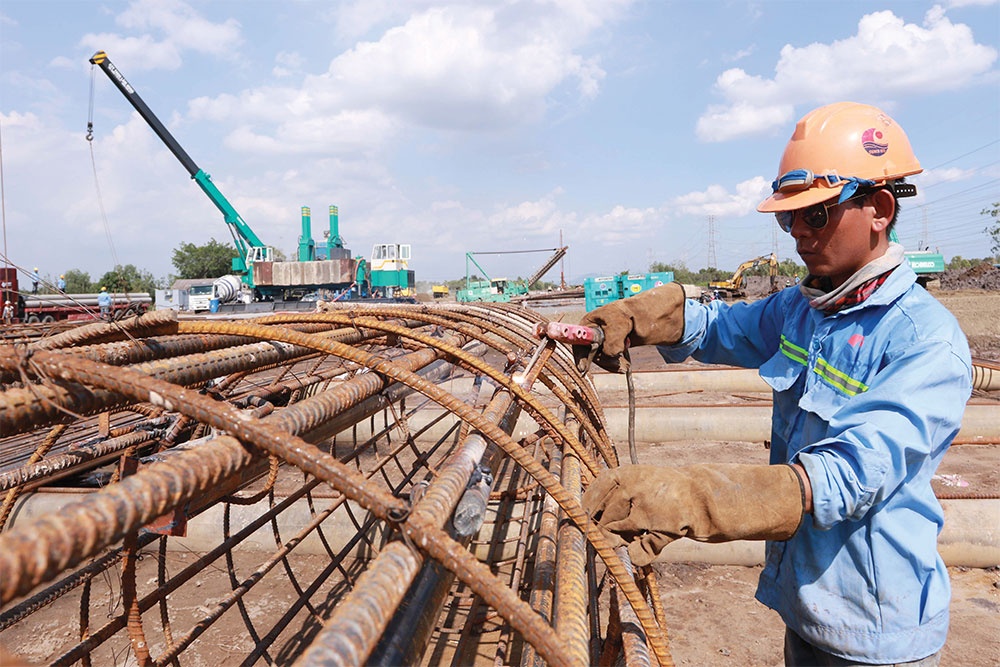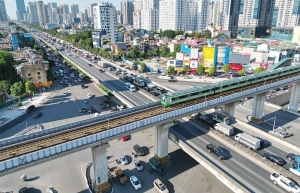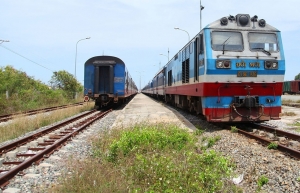Complete transport setup the end goal
 |
| A comprehensive transport system will in turn entice more foreign investment in many provinces |
The World Bank and the Ministry of Transport (MoT) on October 16 discussed loans of $5-7 billion to implement key railway and highway projects in Vietnam, which is a part of the country’s effort to make a breakthrough in infrastructure development.
The discussion came a month after a meeting between Vietnamese Prime Minister Pham Minh Chinh and Would Bank Group President Ajay Banga on the sidelines of ASEAN summits in Indonesia. The prime minister had asked the World Bank to allocate a loan worth $5-7 billion over a three-year period for major infrastructure projects.
“Several transport ventures that require funding include the first phase of a 140-km railway project connecting Bien Hoa and Vung Tau city in the southern provinces of Dong Nai and Ba Ria-Vung Tau, respectively. A pre-feasibility study is expected to be completed in the first half of next year for the World Bank to assess,” said Minister of Transport Nguyen Van Thang.
Other essential schemes are the 151km Pleiku-Quy Nhon highway and the 70km Cam Lo-Lao Bao highway. These two projects are costed at $1.91 billion and $630.4 million, respectively, and pre-feasibility studies for the four-lane highways will be ready by mid-2024, Thang added.
Local authorities at all levels are eager to implement the construction of transport infrastructure across the country. The MoT has directed the creation of a list of priority projects requiring investment in transport infrastructure for the rest of this decade across road, railways, inland waterways, coastal and sea shipping, and aviation.
Based on the issued criteria, some key road traffic initiatives need to be prioritised for resources, including the North-South Expressway, Ring Road 4 in the Hanoi area, and Ring Road 3 in Ho Chi Minh City, among others.
According to the MoT, the need for capital in transport infrastructure by 2030 for these modes of transport comes to about $95.6 billion, excluding infrastructure maintenance.
The amount that could be mobilised from society and from outside the budget accounts for around 52 per cent, the MoT said.
A more complete transport infrastructure system would likely impact the result of foreign-invested capital attraction overall. Danny Dung, a representative of the investment promotion sector at the Institute for International Investment Studies told VIR, “During my 17-year experience in investment promotion, I see that transport infrastructure plays an extremely important role in making the investors’ final decision.”
The central city of Danang is one example, Dung said. Despite being one of the five largest cities in the country, it reports a modest result in foreign investment capital.
“One of the reasons is due to the lack of a cargo terminal at the airport. The major part of foreign-invested projects is in the manufacturing and processing sector and then export. Thus they pay attention to the transport infrastructure system,” Dung said.
“They can’t transport their products from Danang to international airports to Hanoi or Ho Chi Minh City to export their products abroad. It is also the reason why Danang cannot engage larger investors,” he continued.
Meanwhile, these major manufacturers typically select surrounding localities such as Thai Nguyen, Bac Ninh, Nam Dinh, and Bac Giang in order to access stronger conditions to transport products abroad.
“Thus, logistics activity at cargo terminal airports in Hanoi and Ho Chi Minh City is always bustling,” Dung added.
 | Efficient routes at heart of robust goods transport Vietnam’s ongoing endeavours to revamp and streamline its logistics network have heralded promising shifts in the economic landscape. |
 | Foreign groups keen on transport projects While international companies are increasingly interested in Vietnam’s transport infrastructure, there remain barriers to successful market entry. |
What the stars mean:
★ Poor ★ ★ Promising ★★★ Good ★★★★ Very good ★★★★★ Exceptional
Related Contents
Latest News
More News
- Strengthening supply chains through trade promotions and customs reform (December 24, 2025 | 14:00)
- PM orders investment model for North–South high-speed rail (December 22, 2025 | 17:43)
- LS Eco Energy to invest in Vietnam rare earth sector (December 22, 2025 | 17:31)
- Government moves to establish International Financial Centre (December 21, 2025 | 21:00)
- Vietnam's IFC to target global investment flows (December 21, 2025 | 18:00)
- Two national hospitals expand capacity with new facilities (December 20, 2025 | 09:00)
- Ha Tinh breaks ground on major Vingroup industrial and energy projects (December 19, 2025 | 18:24)
- EVN launches major power infrastructure projects nationwide (December 19, 2025 | 18:17)
- VAL inaugurates second production line to meet domestic animal feed demand (December 19, 2025 | 16:37)
- Sun Group pioneers urban tram system in Phu Quoc (December 19, 2025 | 15:00)

 Tag:
Tag:






















 Mobile Version
Mobile Version